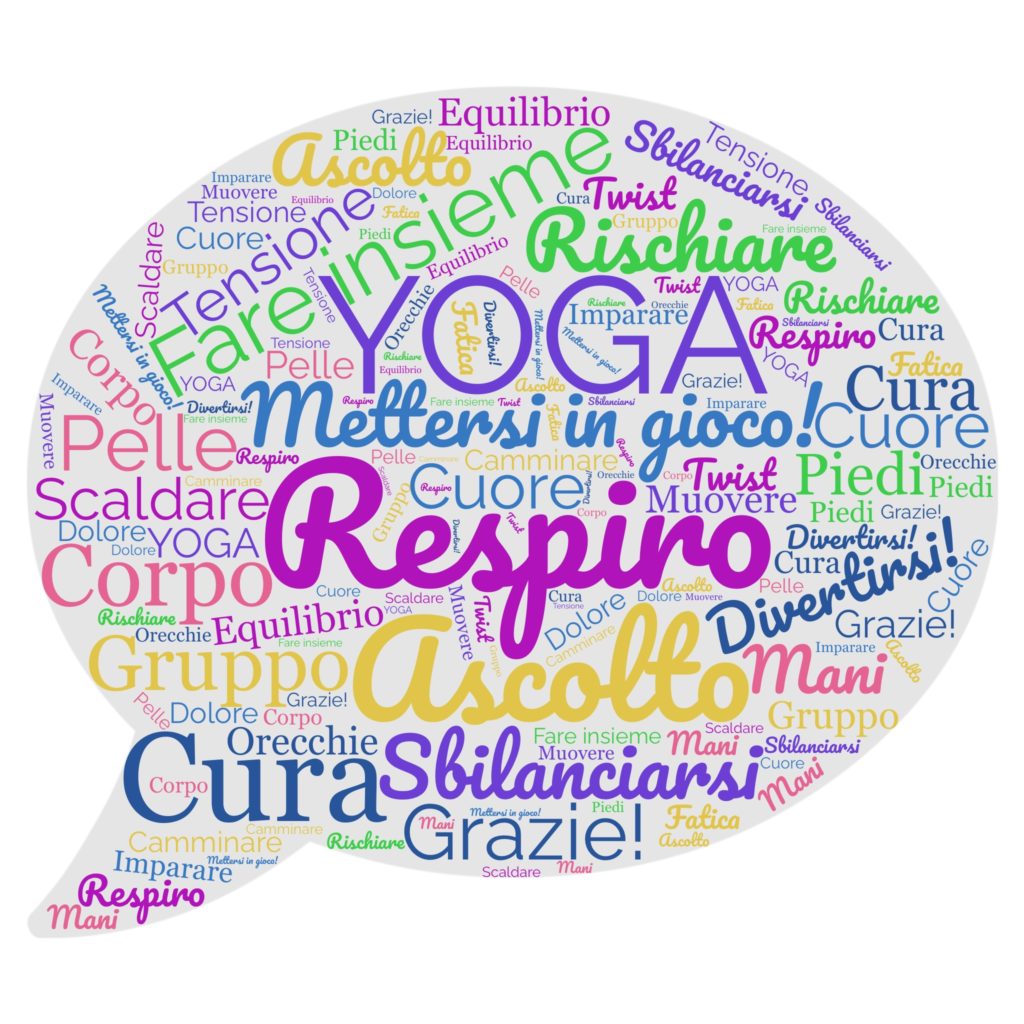Experimenting starting with the known: the experience of the laboratory
“Wellness goal – Metabolic Syndrome”
We want to tell you a story, a regional project in which we participated at the request of the Aulss Department of Mental Health 8 Berica with whom we have been collaborating for some time.
Starting in May 2021, In fact, we have given lessons of yoga – gymnastics aimed at health and fitness within the spaces of the day center of the Mental Health Department of the San Felice multipurpose center; the project was aimed at a group of patients selected for the risk of developing the "metabolic syndrome" and envisaged a multidisciplinary approach, including our laboratory.
Manu conducted one lesson a week from May to November and followed all the coordination meetings: we give you a brief report that in part follows what we have related to the Region.
Starting from the first presentation meeting of the laboratory it was evident that the lessons would take place starting from the sitting position on the chair: the use of the mat for ground work, In fact, it would not be accessible to all participants, given the varied physical conditions. We therefore oriented the work starting from the chair and towards the standing position.
This initial "limit" proved to be a valuable resource for exploring the practice in an unprecedented way, also easing the diffidence and concerns expressed in the first instance by some of the participants: "Look, I can't cross my legs", "With my knees it won't be easy", "I always have back pain" ... the chair, as a household item, Instead, immediately lowered the level of performance anxiety, transforming itself from a simple and well-known everyday object to a potential "tool" and companion for practice.
This reversal of vision is precisely what we have tried to bring as a red thread throughout the proposal: take an object, a gesture, a movement, a "domestic" position, known, and discover its other potential. You don't always need striking gestures or complicated movements to explore, listen, experimenting ... is in the known and in the repeated, in the already consolidated, that we can explore a listening potential without increasing the level of anxiety, Of fear. From there we can then move on to something else that is unknown, unbalance and discover something new: learn.
This use of imagery inspired by domestic life is a precious legacy of the experience made by Manu al Dance Well Teacher Training: contaminate practices, adapt them to the goal which is always presence, the possibility of being there and experimenting in one's own possibilities. There is no common road for everyone and everyone, there are ways, there are courses, there are times. But accompanying all the waterways to the sea is the goal to be pursued.
Experimentation doesn't have to be endless: a catalog of practices is proposed, you experience them, it fits her, is observed, you listen, he expects. It is allowed to settle and is repeated, but you also change, but not too much; keep a common thread, repeating but with small variations lowers the anxiety threshold in people who would not define themselves as "first-hand" experimenters: in this way, in slim form, you experience it, but without shouting it, you let yourself go, but slowly.
And after a little experimentation, it has varied, the point is made: what worked? What to keep? What do we remember? What we liked? What challenged us? What have we tried to repeat on our own?
Here comes the beauty, the famous racking.
We tried to propose a routine of practices that could transfer from the weekly space of the laboratory to the daily space of life, where to insert some small transformations that can have a great impact on general psycho-physical health.

Word Cloud created for the certificates of attendance with the words that emerged during the workshop.
Towards the end of the cycle of meetings we had the experience of shared management: after many experiments and proposals, it was time to try to settle what was left in memory as salient and useful: something we particularly liked or experienced as best for us. We have therefore dedicated the last ones 4 co-management meetings: each proposed and conducted an exercise for the group, and everyone and everyone could collaborate with variations, relaunching.
In this way the individual contribution was reverberated in the group, heightened, clarifying how the group is a real driving force: if everyone remembers a piece, the group is able to remember an entire lesson!
Furthermore, the stimulus of the individual stimulates the body memory of the other, promoting experimented variations but also new proposals: once the body opens to experimentation without the mental block of “not knowing what to do / not be able ", all the potential of simple gestures emerge as spaces for experimentation.
It is precisely the simple gestures of care that have gained the greatest consensus, among all the self-massage on the feet: in the last co-conducted lessons it has never failed! In general, we put a lot of emphasis on work “on the feet”, on rooting, on feeling the earth, the support, standing on two feet, then on one; the transit from two feet – a foot – two feet we call walking: that moment of gambling, of suspension, of balance that all and all of us constantly experience but to which we do not give weight, thinking of not being able to stand on one foot. And instead… just expand the times and There you go.
Massage your feet with tennis balls or simply with your hands, recognize by touch where it is needed or how to warm your feet: intuitive gestures of care that do not require great technique but a progressive familiarity, a simple love for each other.
If we were to summarize the experience of the laboratory, we would say that overtime is not always needed, but a recovery of the ordinary: work to propose simple bodily listening and accessible care practices, basic, but don't take it for granted, favoring the feeling, perceiving experimentation.
Massage your body, knead it, tap it lightly with your fingers or tennis balls or rub it with a fabric; actively use your hands, squeeze them, stringerle, massage them, feel its strength and potential; use the look, external and internal, train hearing, tame silence and darkness, often horizons of fears; find silent company in the breath, able to “sew the pieces together” as we have repeated many times.
Experience that our state of mind affects our breathing, but also that staying in the breath can change the mood, and in this way we can influence it "for good", or even just recognizing our state of mind through our breath, and name it.

